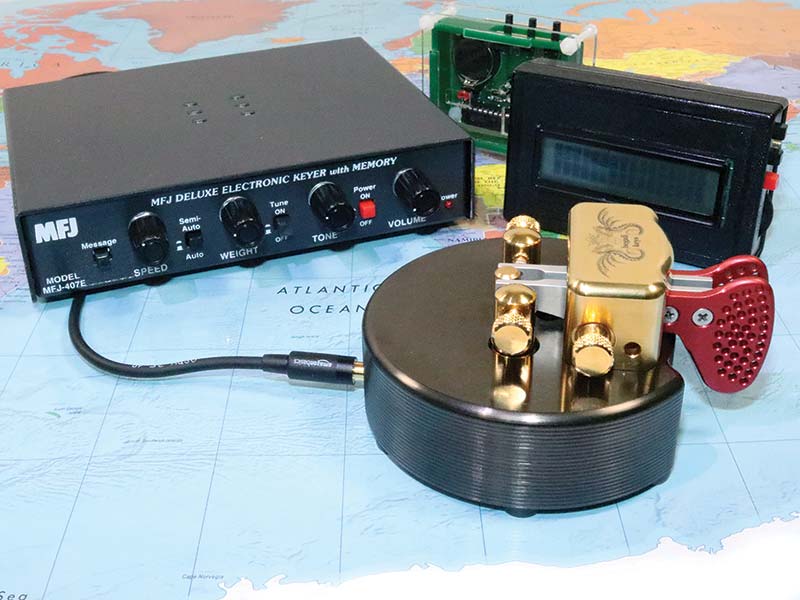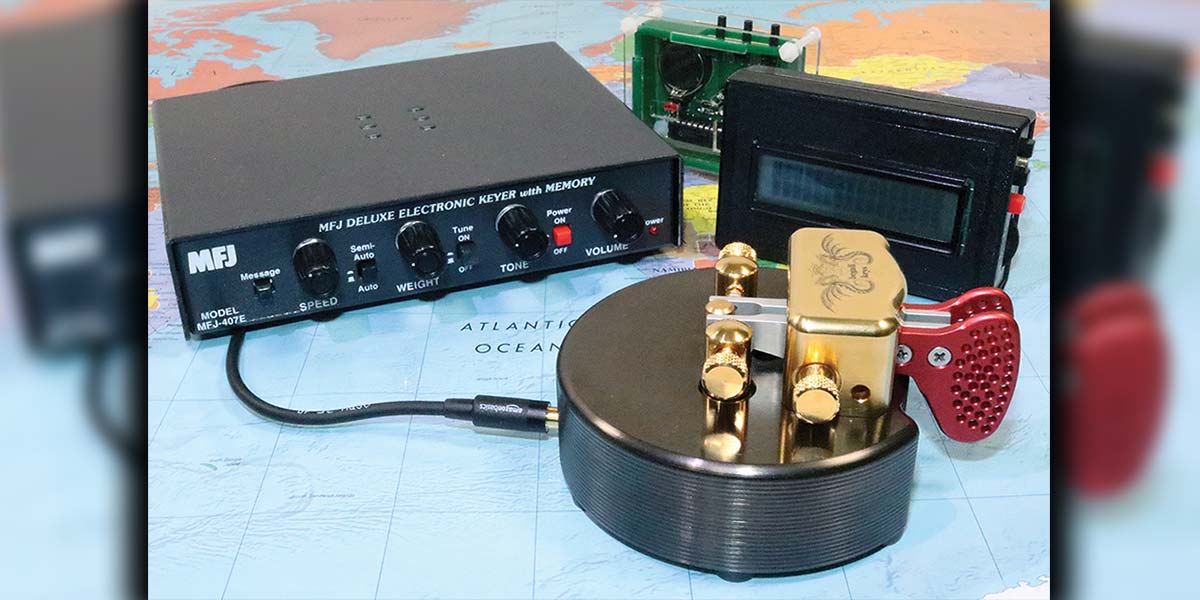If you’ve picked up your amateur radio license in the past dozen years, then there was no CW component of the test, and you may not know CW. However, whether or not removing the code component of the FCC (Federal Communications Commission) test was a good thing for the amateur radio hobby, there is merit in learning and using CW. Why?
Well, there are the often touted practical and theoretical technical benefits of CW over SSB (single-side band), and some forms of digital communications: Minimal bandwidth and power requirements; simplicity of transmitter and receiver circuitry; relative immunity from noise; and security and privacy.
My chief practical reason for using CW over voice is the ability to operate in the early morning without disturbing anyone. Straight keys and iambic paddles don’t make much noise compared with loud verbal discussion using a microphone. That said, my primary reason for using CW isn’t practical or logical — I simply enjoy it.
It’s fun decoding a noisy signal from the crud and then using a quality straight key or iambic keyer to connect with the operator on the other end of the signal chain.
So, let’s say you’re at least intrigued with the possibility of using CW as a radio amateur. What are the best ways to get up to speed?
Well, you’ll need to address both sending and receiving CW. To learn to send CW, you’ll need a straight key, an audible oscillator, and a pair of ear buds or headphones. For receiving, you could rely on a receiver tuned to W1AW, one of the many YouTube CW communications videos, or, better still, a dedicated CW training device or any number of apps for your smartphone or laptop.
For sending, my recommendation is to pick up an affordable straight key/practice oscillator combination. The best I’ve used is the Japanese made High-Mound TC-701 Practice Key, available for $54 from Morse Express (morsex.com).
Unlike most key/oscillator combinations, the TC-701 is based on a regular key, but with a code oscillator built into the base. When you’re done learning to send CW, you can easily remove the oscillator circuit and use the key with your HF transceiver. A slightly cheaper option is the MFJ-557 code practice oscillator/key. It’s about double the size of the TC-701, but it’s also significantly cheaper at $37 from GigaParts (www.gigaparts.com).
Although it’s more challenging than using a straight key, you could also start learning to send CW by using an iambic keyer and an iambic practice oscillator. Check out Morse Express for a variety of iambic keyers. eBay is, of course, another option.
For the iambic oscillator, the most affordable option I’ve used is an electronic keyer module from www.electroresales.com ($18). The website provides full schematics and printed circuit board layouts for each practice oscillator model.
If price is no object, then consider the MFJ-407E Deluxe Electronic Keyer with Memory available from Amazon and ham radio stores, such as GigaParts ($99). The MFJ-407E is a desktop unit with a self-contained speaker and easy-to-use front control knobs for volume, speed, tone, and weight.

For learning to receive CW, my all-time favorite is another MFJ product: the MFJ-418 Pocket Morse Code Tutor. About the size of a deck of cards, this unit with LCD screen and internal 9V battery is out of production but turns up regularly on eBay. Expect to pay $20-30.
It’s simple to use. I can turn it on and listen to a simulated CW communication in about a second — less time that it would take me to find an app icon on my cell phone.
For the latest in full-featured electronic tutoring for CW, my pick is Morse-it by ICOM. I’m running version 8.1.1 on my iPhone and iPads, and it’s by far the most feature packed, easy-to-use Morse Code training app available. At $5 from the App Store, it’s still a bargain, even compared with the free Morse tutoring apps.
I keep the app on my cell phone for practice on long trips. Because it can use any text file as an input, the content never grows stale.
So, there you have it. Technology aids are readily available. All you need is the discipline to spend 10-20 minutes/day practicing and you’ll be sending and receiving CW at 10-15 WPM before your next issue of Nuts & Volts arrives. NV


